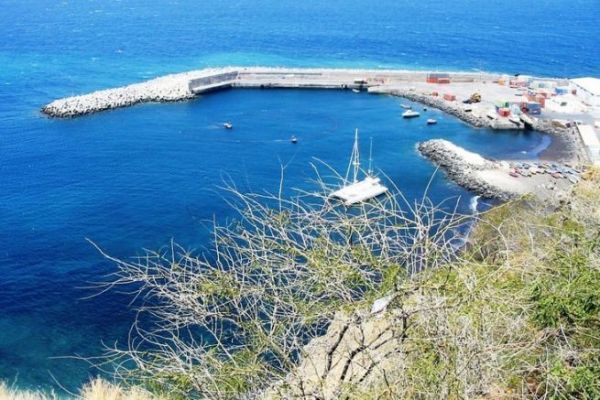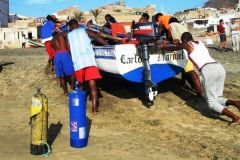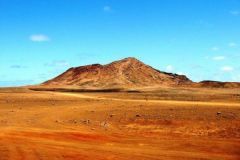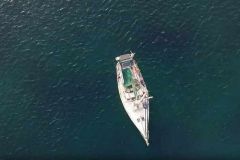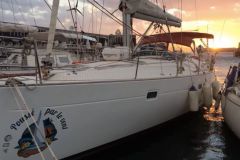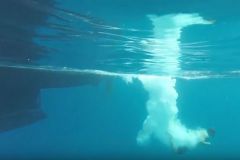Santo Antao
With its scattered population of 44âeuros000Â inhabitants, it is the most mountainous and the most exposed to the winds. This makes it the wettest and greenest island in the Cape Verde archipelago, at least on the northern side. The southern part, on the other hand, is much more arid, offering only stunted vegetation and lunar landscapes.
Examination of the charts led the navigator to attempt a stopover at Tarrafal, on the west coast. Alas, disembarkation proved to be a rock'n'roll operation, as there was no quay or provision of any kind for docking.
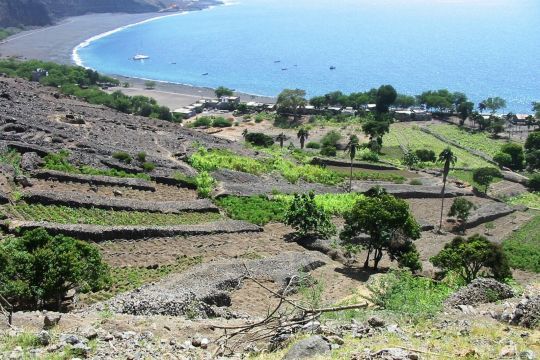
The village houses are made of stone, with palm-leaf roofs and sand streets. Some are made of concrete blocks, like breeze-blocks, manufactured on site in crude molds.

Santo Antao is well-watered
Although terrible droughts have a severe impact on the Cape Verde archipelago, water is relatively abundant in Santo Antao. It arrives from the mountains and is channeled through a network of pipes that irrigate the espalier crops that line the valley and provide food for all. This system is highly efficient. It allows a wide variety of vegetables and roots to grow: yams, sweet potatoes, corn, manioc, tomatoes, mangoes, guavas, bananas...
Otherwise, when it comes to agronomy, we also produce cows and goats...
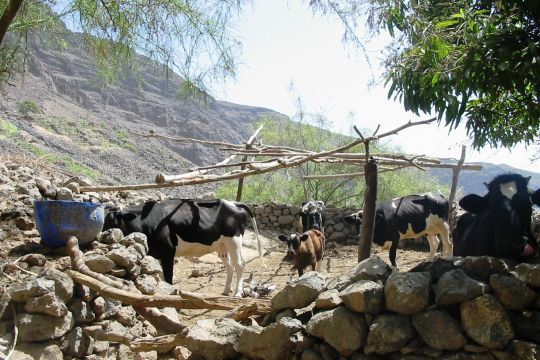
Brava's short stopover
After a quiet day and night at sea, we arrived at daybreak in a pretty cove sandwiched between two cliffs to the north of the small island of Brava. Along the way, we came across a whale and an impressive colony of dolphins. We see them all the time, but it's so magical to watch their ballet that everyone's on deck every time. However, despite the beauty of the place, we found the anchorage uncomfortable and decided to continue on towards Fogo, a dozen miles away.
Fogo, an island/volcano that exudes a sense of prosperity unusual in the archipelago
Fogo stands out from the other islands of the archipelago, as it recèle an active volcano with a circular cross-section âeuros about 25 km in diamètre âeuros culminating at 2âeuros800 m.
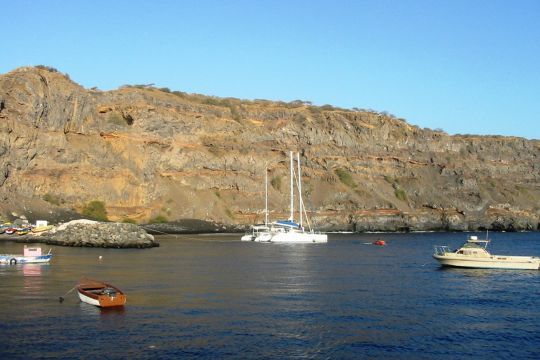
In spite of droughts, famines are fortunately now a thing of the past, thanks in part to remittances from expatriates. More than half of the 1,200,000 Cape Verdeans live abroad. Of these, the vast majority work in the United States, but also in Europe (mainly Portugal). Others have emigrated to a number of African and Latin American countries.
Discover Sao Filipe
The small town of Sao Filipe is very charming, with its cobbled streets and charming colonial-style houses. Its proximity to the volcano provides the rain needed for sustained agricultural activity. Its vineyards produce good quality wines, whose reputation radiates for hundreds of meters around... The steep, rather green coastline offers magnificent landscapes ideal for hiking. Inside the port itself, every morning, a dozen or so youngsters seine fish in their modest wooden boats.
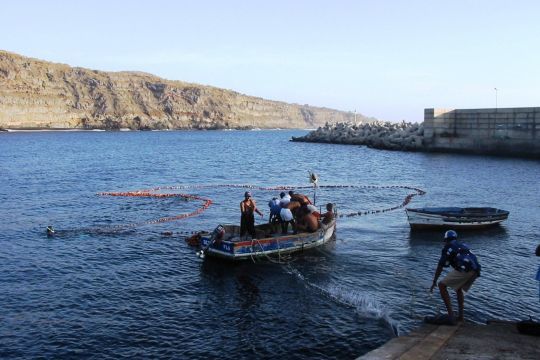
Two or three of them get into the water with masks and flippers and play human sonar, telling the others where the fish are. The net is then quickly deployed, and the few kilos of prey caught are hauled aboard. Not enough to make you rich, but it does feed the family...
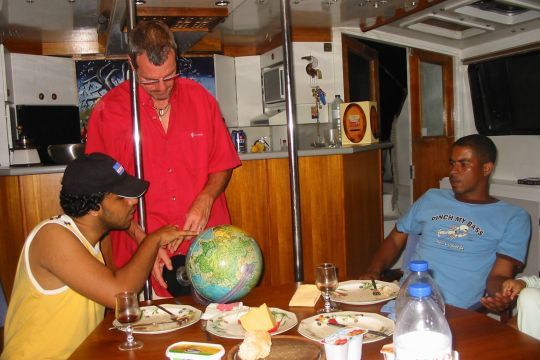
Meeting José, a maths teacher at the village school, we learn more about the real life of the people here in Fogo: modest and peaceful.
